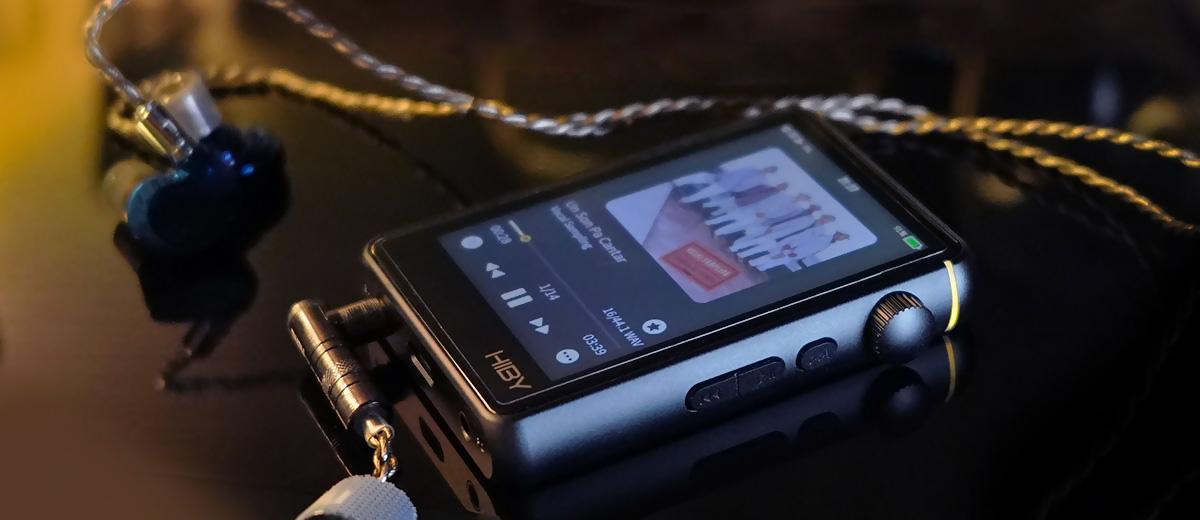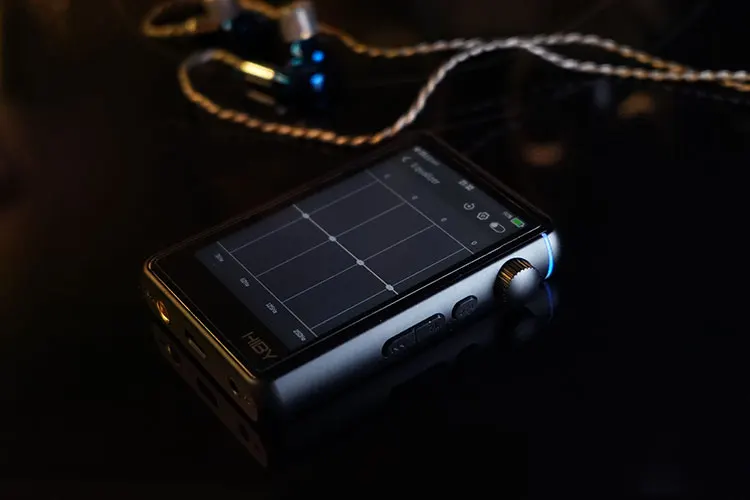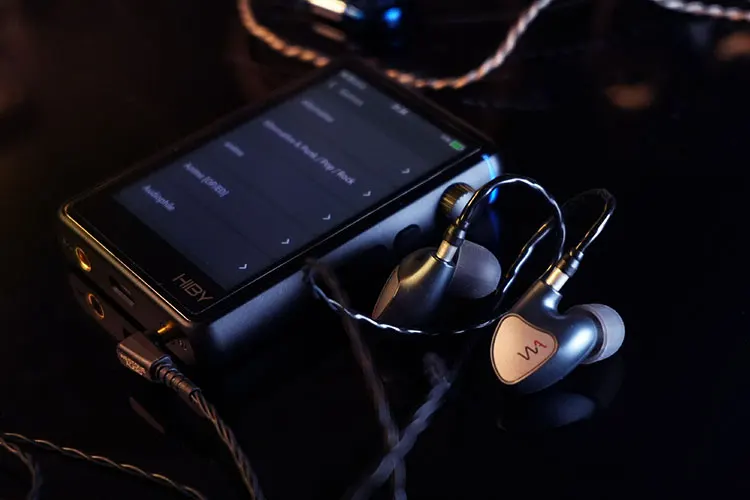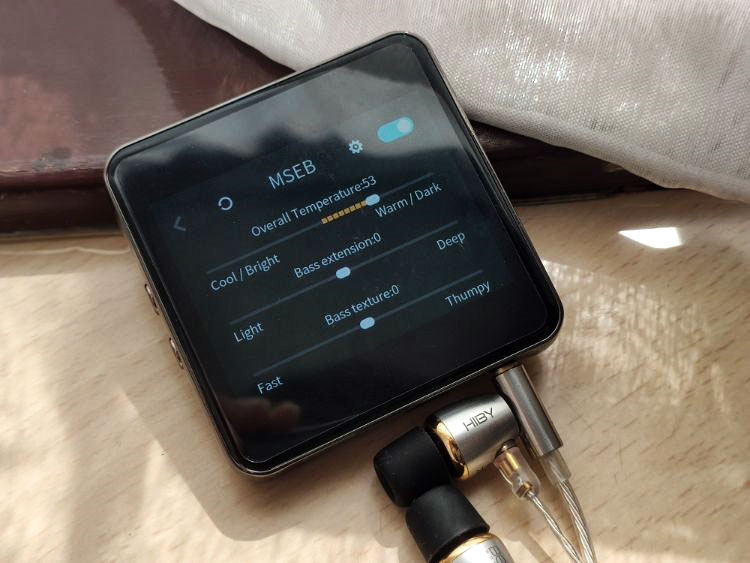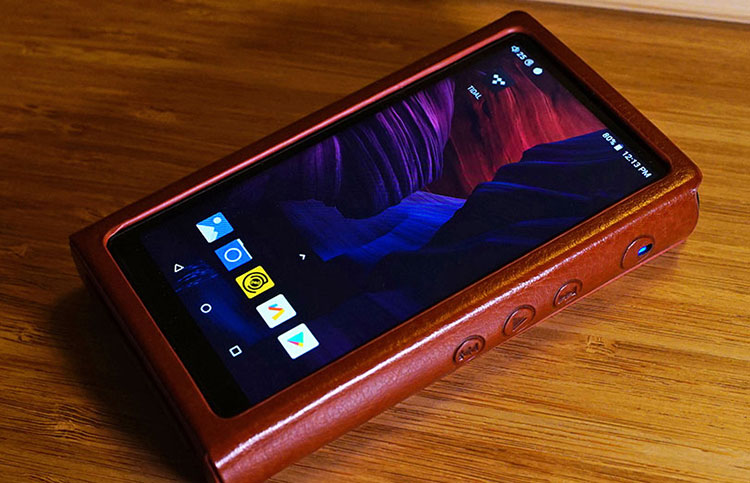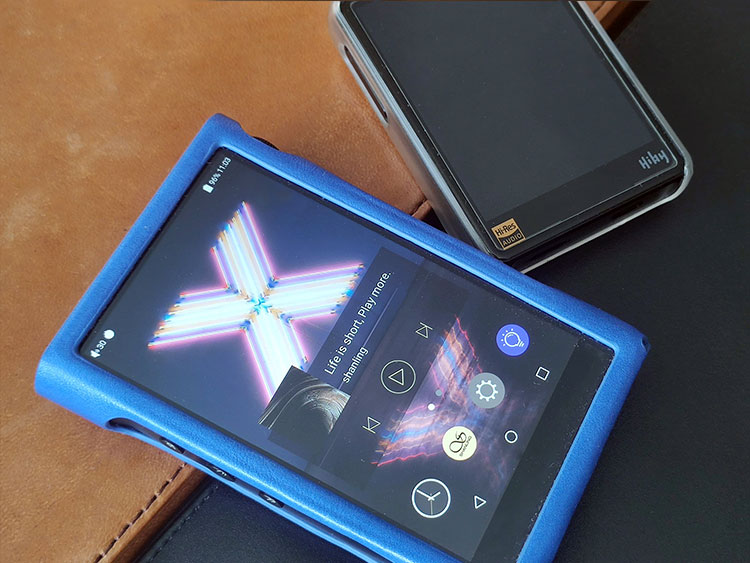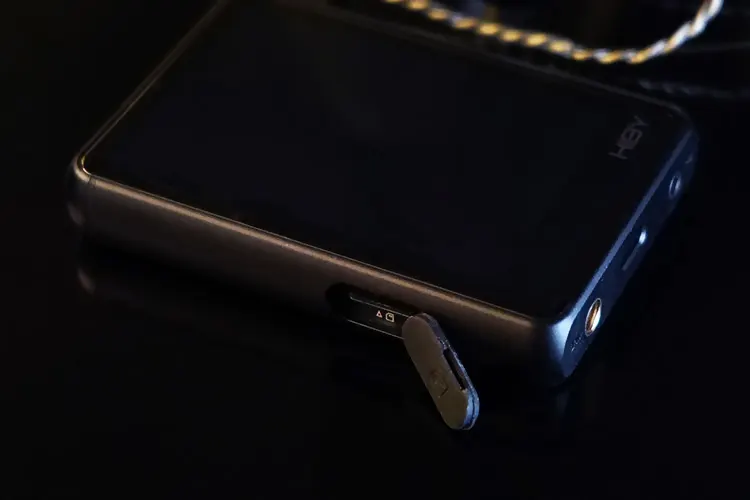Sound Impressions
The R3 II is given around 100 hours of run-in time before the below impressions are made.
For all impressions, I used the DUNU Falcon Ultra, the Earsonics CORSA on 4.4mm cable, and Etymotic EVO to test with local audio files as well as streaming from Tidal which yields similar quality.
Summary
The R3 II is tuned on the safe side with the upper register nicely rounded and not too sharp sounding. To me, it sounds rather M-shaped with my paired IEMs, suiting modern pop music with its adequate dynamics and decent noise control. It also has some nicely elaborated vocal harmonics.
I would highly recommend using the MSEB tuning panel to achieve better clarity and openness, especially with IEMs that have a richer or more fulsome tuning.
In the drop-down menu, you can select L/H gain level and I’d prefer using high gain with the 4.4mm output all the time for stronger output power and slightly more penetration in the upper vocal range.
On the 3.5mm output, you will notice the sound is quite a bit softer, and the treble is also more rounded.
Timbre
The R3 II elevates its slightly soft low-mids and the upper vocal range, resulting in improved dynamics and a richer body, and sweetens the vocal range despite sacrificing some of the sparkles in the upper vocal range.
With brighter voices or higher-pitched instruments, you can detect the sharp roll-off at the higher end of the frequency spectrum to bring down sibilance without killing vibrancy, and the tuning is great for prolonged listening sessions.
The bass is nicely layered and does not bleed to the vocal range that is colored slightly warm, and the vocal range is not as resolving as the bass.
The tuning avoids veiling or exaggeration of specific frequencies, the mid-bass is light punching and responsive, and with the top end sounding slightly dampened it is totally free from harshness which works well with Jazz and blues to sound relaxing.
It performs particularly well with IEMs that exhibit stronger texture in the mid-range and extension in the treble for better overall balance.
Testing with the DUNU Falcon Ultra with stainless steel filters it pairs quite well with the R3 II to sound balanced in tone and quite resolving in the bass, however when switching to the copper filter the bass feels fatter and less controlled.
With the Etymotic EVO, it sounds a bit dry and is more protruding in the upper register with percussions, though you may like how the vocal is cleanly presented with less coloring that outlines the mid-lows more distinctively. There are sufficient dynamics, however, separation power is limited with this pairing but can be enhanced by MSEB.
If the IEM has a V-shaped sound signature or leans towards the upper register, the presentation may sound somewhat hollowed, though again MSEB would be an effective fix.
Staging & Dynamics
The R3 II provides fair extension and controlled, layered bass that contributes to defining the headroom more 3D. While it may not have strong transients and the vocal imaging can sometimes lack distinctiveness, the MSEB tuning feature can enhance these aspects for more precise and engaging sound.
The soundstage rendered can be likened to a small classroom, providing a sense of space that is slightly confined in the upper register.
As more instruments are introduced into the mix, the performance of the R3 II may start to struggle and the sound can feel somewhat flattened. However, considering its price point, the overall performance remains adequate.
The 3.5mm output sounds a bit fuzzy and with more power in the 4.4mm PO, it helps expand the stage and separate the vocal from the backing track much clearer.
Synergy
The R3 II is quiet in the background with little noise detected even in Bluetooth mode. The noise floor is not detectable when paired with quite some dynamic IEMs.
With 380mW @ 32ohm in its output, it does feel more powerful than most dongles and sounds more expansive, especially with loads that are more demanding for power.
However, the 3.5mm output is less powerful, though it still maintains sufficient clarity and does not sound muffled, unlike some earlier devices that focus only on the balanced output.
With the 4.4mm output, the R3 II can drive small cans and IEMs that are more power-hungry to sound dynamic, especially quite some entry-level dynamic IEMs that have the potential to scale with power.
Select Comparisons
HiBy R2
Technical
Three years ago, I covered the HiBy R2 which was later replaced by the R2 II which uses a single piece of ES9219C decoder, unlike the dual DAC implementation on the R3 II.
The R2 is equipped with a single piece of ES9218 DAC and is capable of MQA 4x unfold and DSD128 native decoding only. However, the R2 supports 5GHz WiFi and MSEB tuning.
Design
The R2 features a reflective, chrome-colored frame with a squared form factor. One significant distinction is the presence of a 2.5mm balanced output on the R2, while the R3 II includes a 4.4mm output.
Additionally, the R3 II has a significantly larger screen area and a longer body compared to the R2. Another notable difference is the presence of an indicator bar exclusive to the R3 II, adding a cool visual effect in darker environments.
Performance
Although the price point for both DAPs comes quite close, the R3 II is clearly superior in output power and micro details retrieval with dual DACs inside. This allows for stronger dynamics to be heard and better synergy with dynamic IEMs, and the vocal image is rendered more three-dimensional with better separation power.
The difference between these DAPs becomes more pronounced when higher impedance IEMs or small headphones are connected. The R3 II stands out with its better bass resolution, darker background, and overall tonal balance, as well as stronger dynamics.
Additionally, the R3 II offers a wider stereo image that doesn’t color the vocal too laid-back. Both DAPs provide the flexibility to adjust the output to achieve a more euphonic presentation by using the MSEB features, which work effectively on both devices.
Upon the release of the R2, an optional accessory called the FD1 was available for purchase at $59. The FD1 featured dual ES9118 DAC chips and two crystal oscillators, serving as a compact decoder and amplifier.
While the FD1 provided a fun power boost to enhance the performance of the R2, the combo’s price and size were comparable to the R3 II. Ultimately, the newer DAP outclasses the overall performance offered by the older FD1 and R2 combination.
HiBy R5 Saber
Technical
The HiBy R5 Saber is an Android-based DAP featuring Dual CS43198 DAC, Qualcomm Snapdragon 425 SoC, and MQA 8x unfolding power. With Android 8.1 onboard you can load Spotify and other applications on it which makes it more flexible compared to the R3 II which is limited to Qobuz and Tidal.
The R5 Saber is 4.4mm equipped like the R3 II, and it can breathe 1040mW into a 16Ω load, or 500mW into a 32Ω load, which is quite a bit stronger than the HiBy DAP.
Design
The R5 Saber features a longer body with a stylish glass decoration on the panel beneath, enhancing its sleek appearance. However, when using a leather case, the screen bezel may feel slightly thicker.
Compared to smartphones, the screen on the R5 Saber is relatively small. If you primarily focus on playback features and do not frequently utilize non-playback functions, you may find that the HiBy OS on the R3 II provides a more efficient experience, and it powers on faster.
Performance
The R5 Saber exhibits a clean and distinct vocal range, allowing vocals to cut through with clarity.
In comparison, the R3 II may not provide the same level of vocal clarity and expansiveness, though the mid-bass is more focused, and together with the more rounded treble, it renders the vocal sweeter.
Additionally, the R5 Saber delivers deeper bass extension with stronger density, accompanied by more elaborated bass decay. Its upper register is characterized by energized and polished sound, the harmonics are more clearly presented without being overly intrusive.
The R3 II is comparatively more conservative and punches lighter, which allows it to sound more controlled and maintains good separation between the vocal range and the bass.
Overall, the R5 feels more open in the upper register and has stronger transients, and the R3 II is more forgiving. It renders the headroom not as spacious as the R5 Saber though there is good control and sufficient definitive power to sound engaging and fun.
Shanling M3X
Technical
The Shanling M3X is an early adopter of the dual ES9219C solution, supporting MQA 16x unfolding and DSD256 decoding, using an older Android 7.1 OS.
This is a 2-year-old product yet it is still competitive in terms of features and hardware. It can deliver 240mW @32Ω load, 36% less than the R3 II though its battery allows playing back for up to 19 hours.
Design
The M3X is a much bigger machine and I guess quite some of its size goes to its 3200mAh battery compared to the 2000mAh battery on the R3 II.
On the M3X it fits a larger screen and with Android onboard, it is definitely more flexible with streaming apps, video viewing, and media management. Again, on the M3X you can use other apps like Spotify but with R3 II it is more limiting.
The user experience with the M3X is quite different as it can slide into any pocket easily, and with the smaller screen, I’d prefer controlling it over on the phone using the HiByLink feature.
Performance
Despite being slimmer in design, the R3 II has greater output power on paper compared to the M3X. When comparing their 4.4mm balanced outputs, both devices offer more power and vivid tuning compared to their 3.5mm outputs, so my comparison is made based on 4.4mm PO.
In terms of sound characteristics, the M3X sounds more elaborated and defined in the mid-range. This results in a fuller presentation, more natural vocal presentation with a stronger sense of imaging that compensates for its comparatively less powerful output when compared to the R3 II, which offers a sweeter vocal presentation.
As for the bass, the R3 II has a cleaner decay and sounds slightly more layered, while reaching deeper. Both devices here aren’t strong in bass intensity and again the HiBy DAP is more malleable with the MSEB panel which allows some degree of tweaking without hampering the naturalness of the output.
Overall, the R3 II is more versatile with its built-in tuning features and M3X runs open Android so technically you can download different plug-ins for the same tweaks.
In terms of decoding quality, the two go head to head with the M3X sounds slightly more natural and expansive in tuning to my ears. However, the R3 II’s stronger output power gives it some advantage in pairing with IEMs that are more demanding for power to sound contrasty and vivid before any tweaks.
Our Verdict
The HiBy R3 II stands out with its compact form factor, offering impressive power and battery life.
It serves as an excellent secondary device, seamlessly integrating with smartphones to extend the music listening experience on the go, particularly when used with 4.4mm terminated IEMs. The MSEB feature is again a killer feature implemented to make any pairings more euphonic.
For those who find dongles lacking in functionality or experience power drain issues, this DAP presents itself as a viable alternative that does not draw power from the phone.
There is, in fact, little competition as more manufacturers move to make dongles, and with its versatility, it would be an easy recommendation for newcomers to the hobby and individuals seeking streaming capabilities or a mega portable digital source for their DACs.
HiBy R3 II Technical Specifications
- 5mmPO Max voltage/ output power: 1.9Vrms / 112mW
- 4mmPO Max voltage/ output power: 3.5Vrms / 380mW
- THD: 0.0005%
- Dynamic: >115dB
- Noise floor: 2.2uV (3.5mm) / 3uV (4.4mm)
- SNR 119dB
- Channel separation: 74dB(3.5mm) / 103dB(4.4mm)
- Frequency response: 20Hz-90kHz
- DAC: Dual ES9219C
- Audio formats support: DSD256 & PCM384kHz/32bit / MQA16X
- Output: 3.5mm PO, 4.4mm BAL, 3.5mm LO
- Digital output: USB-C / Coaxial digital (via Type-C port)
- WiFi bands: 2.4GHz
- Bluetooth: Version 5.1 (two-way)
- Bluetooth codecs support: UAT, LDAC, aptX (transmit only),
- AAC, SBC
- Wireless audio features support: Airplay, DLNA, HiByLink
- Dimensions: 86.9*60.6*14.5mm
- Weight: 118g
- Battery capacity: 2000mAh
- Playtime: >15h
- Charging time: <2h (0%-100%)

